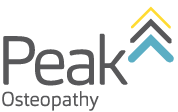September 11, 2019
In
Advice
Exercise prescription for pregnant and new mums
During pregnancy the body undergoes a variety of changes as it prepares itself for childbirth. Some of these changes can contribute to pain and discomfort for the expectant mother. The growing baby places an increased strain on the muscles of the stomach, back and pelvic floor and when combined with relaxin (a hormone secreted by the placenta that relaxes the ligaments of the body) can contribute to pelvic, back, hip and nerve pain. In order to assist in managing and prevent subsequent pain, certain exercises may be prescribed or recommended both pre and post partum. Dr Belle Picco, osteopath, takes us through some of these.
During pregnancy
- General cardiovascular exercise
- Pelvic floor stability / strength
- Why: Pelvic floor strengthening exercises help to improve the tone of the muscles, which is linked with reducing post partum urinary incontinence (2).
- Types of exercise: voluntary contraction, inward and upward and hold – aim to hold for 5-10 seconds before relaxing for 5 seconds and repeat multiple times a day (roughly aim for 10-20 a day). *This exercise is tricky! Please speak to your osteopath or myotherapist about how to perform this correctly.
- Strengthening exercises
- Why: strengthening the muscles of the stomach, glutes and lower back and can assist in alleviating lower back and sacroiliac joint pain which are commonly implicated in pregnancy.
- Types of exercises: squats, pelvic tilts, lunges, side lying hip abduction.
- Stretching and self release
- Why: to help take as much pressure off the lower back – typically necessary through the glutes and lower extremity.
- Types of exercises: seated piriformis and glute stretch (sit down with your feet flat on the floor, lift one leg and place your ankle on to the opposite knee and hold for 20-30 seconds), standing hamstring stretch (place foot up on to a step and have a slight bend through the knee, then hinge forward from the hips and hold for 20-30 seconds).
Post partum
- Pelvic floor strength / stability
- Shoulder strengthening work
- Why: this will aim to counteract the internal rotation of the shoulders that tends to go hand in hand with feeding, carrying and cuddling new babies.
- Types of exercises: Resistance band external rotation, resistance band 45 degree rows.
- Gluteal activation
- Why: a common complaint we see in clinic with new mums is back pain. This is commonly attributed to the new set of daily tasks including bending over, lifting and feeding. One way to help limit back pain is by strengthening the glute muscles to assist in taking increased strain off the back itself.
- Types of exercises: supine glute bridges with resistance band, crab walks with resistance band and side lying hip abduction.
These exercises are all general and not specific to each individual. If you have any questions about specific exercises and rep ranges for you or someone you know, please speak to one of our osteopaths or myotherapists so we can tailor these programs to your needs.
[i]Kramer K, McDonald S. Aerobic exercise for women during pregnancy review. The Cochrane Collaboration. 2010(6).
[ii]Mørkved S, Kari B. Effect of pelvic floor muscle training during pregnancy and after childbirth on prevention and treatment of urinary incontinence: a systematic review. Br J Sports Med. 2014;48(4):299-310.



